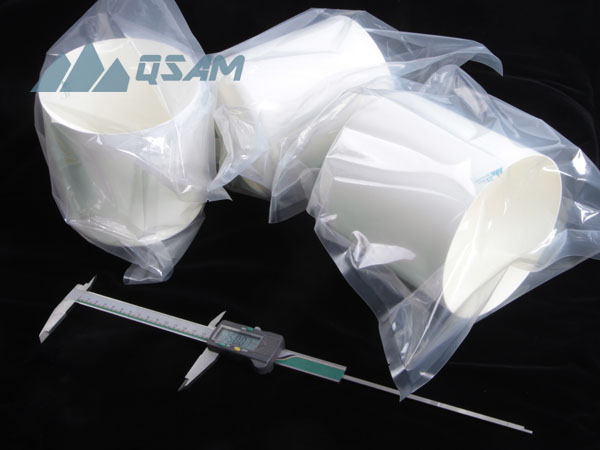PBN Crucibles Excel in High-Temperature Corrosion Tests for Molten Salt Environments
Research Background and Significance
Recently, a collaborative study by Luke C. Olson from Savannah River National Laboratory and James W. Ambrose from Woodward Inc. was published, titled "Impact of Corrosion Test Container Material in Molten Fluorides." This work explores the influence of different crucible materials on the corrosion rates of alloys in high-temperature molten salt environments. This research has important practical implications for concentrating solar power (CSP), high-temperature nuclear reactors, and other high-temperature industrial applications.
Experimental Design and Methodology
The research team conducted 500-hour corrosion tests at 850°C using four different crucible materials: graphite, nickel, Incoloy-800H alloy, and pyrolytic boron nitride (PBN). These crucibles were loaded with a molten salt mixture of LiF–NaF–KF (46.5–11.5-42 mol. %), which was used to immerse Incoloy-800H alloy samples to compare the impact of different crucible materials on alloy corrosion.

Schematic diagram of a corrosion capsule device used for testing corrosion performance in research
Corrosion Mechanism Analysis
The experimental results showed that the weight loss of the Incoloy-800H alloy in the graphite and nickel crucibles was 30 times higher than in the Incoloy-800H and PBN crucibles. This difference is primarily due to the galvanic coupling between the alloy and the crucible materials, as well as the dissolution and reduction of chromium (Cr) elements. In the graphite and nickel crucibles, chromium dissolved through reactions with the molten salt and was subsequently reduced at the interface between the molten salt and the crucible material, forming chromium carbides or Ni-Cr alloys, thereby accelerating the corrosion of the alloy.
Advantages of PBN Crucibles
The selection of appropriate crucible materials is crucial for high-temperature molten salt experiments. PBN crucibles have shown significant advantages in this study, owing to their superior inertness and high-temperature stability. PBN crucibles not only reduced the interaction with the alloy but also maintained their physical state after the experiment, demonstrating their durability in extreme environments.
QSAM Inc., as a leading manufacturer of PBN crucibles in the market, has provided quality services to research users. Their professional manufacturing capabilities and customization services enable researchers to obtain the most suitable high-quality crucibles for their experimental needs, further supporting the advancement of scientific research.

PBN Crucible
Experimental Results
The experimental data further validated the advantages of PBN crucibles in high-temperature molten salt experiments. Compared to graphite and nickel crucibles, the chromium content in the PBN crucibles was significantly lower, indicating a minimal contribution of PBN crucibles to chromium dissolution. This conclusion is supported by neutron activation analysis (NAA) and inductively coupled plasma optical emission spectroscopy (ICP-OES) analyses of the molten salts.
Conclusions and Outlook
This study not only provides important experimental data and theoretical support for the selection of crucible materials in high-temperature molten salt environments but also offers guidance for material selection and design in future industrial applications. The performance of PBN crucibles in providing chemical stability and reducing material interactions makes them a preferred choice for high-temperature applications. Future research can further explore the influence of different molten salt systems on PBN crucibles and investigate the potential of PBN crucibles in other extreme industrial environments.
